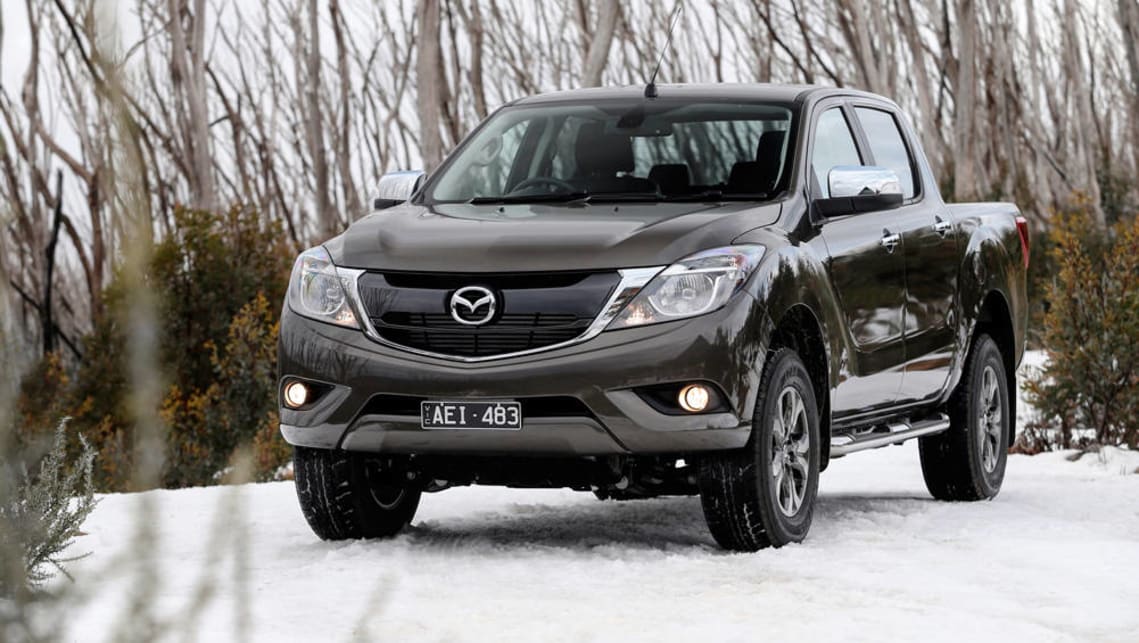
Great Wall Motors Australia (GWMA) has discovered that the inclusion of extra safety equipment has not helped the facelifted Steed workhorse avoid another damning two-star safety rating from the Australasian New Car Assessment Program (ANCAP), having replicated its predecessor's mediocre result from 2009.
Despite being described by the Chinese carmaker as an "all-new" model that offers "outstanding levels of performance, value, safety and comfort", the safety authority has found otherwise.
According to ANCAP, the underpinnings of the dual-cab ute are largely unchanged when compared to Great Wall's former two-star pick-up – which was sold between 2009 and 2016 under the V240 nameplate.
There has been little change to the vehicle's structure to improve the safety of the passenger cabin.
ANCAP boss James Goodwin labelled the result a disappointment for the brand's local arm, and warned consumers to be sceptical of any claims made by a manufacturer when purchasing a new car.
"While the Steed is equipped with six airbags and electronic stability control, features which were not offered on the previous model, there has been little change to the vehicle's structure to improve the safety of the passenger cabin," he said.
The Steed – which lobbed in September last year – achieved its worst result in frontal offset testing, scoring 8.31 out of a possible 16 points due to excessive footwell deformation and pedal displacement.
In this scenario, the driver's head and neck is offered 'good' protection, while a lower leg injury is most likely having been assessed as 'poor'. The chest and upper legs would only have a 'marginal' chance of avoiding harm in an equivalent crash.
Assessment of whiplash protection also provided a ‘marginal' final outcome thanks to lacklustre results from the dynamic test, despite geometric testing being rated as ‘good'.
However, full marks were awarded for the side impact test – earning all 16 available points – despite being untested.
Intelligent seatbelt reminders are fitted to both front pews but are not present in the second row, which led to a score of 2.00 out of 3 in this area.
As a result of the Steed's low frontal offset scores, neither the pole or pedestrian protection tests were conducted despite its eligibility for such assessments.
However, full marks were awarded for the side impact test – earning all 16 available points – despite being untested, but this is a default result for large vehicles given their tendency to perform well in this situation.
Overall, a truncated final score of 16.49 out of 37 was determined, with the Steed's poor performance in the frontal offset and whiplash protection tests to blame for the two-star result.
This safety rating only applies to 4x2 petrol dual-cab variants as the other model grades in the Steed line-up have yet to be tested.
A lack of top tether anchorages for child restraints has also led to ANCAP recommending that the Steed is not suitable for transporting young children.
Additionally, increasingly standard safety technologies like auto emergency braking (AEB) and lane support systems (LSS) are not offered throughout the Steed range.
GWMA spokesperson Andrew Ellis reaffirmed that safety is a priority for the company as it looks towards taking immediate steps to resolve these issues.
It's clear to everyone in the organisation our ANCAP test standards need a dramatic improvement.
"We have sent all the data to our engineering team in head office and set up a response team to investigate what needs to be done to improve the ANCAP performance of our product," he said.
"It's clear to everyone in the organisation our ANCAP test standards need a dramatic improvement."
Meanwhile, ANCAP has also released its safety ratings for the Honda Civic sedan and hatch, as well as the Hyundai i30, with both small __cars achieving the maximum five stars.
When it goes on sale this month, the i30's safety score will apply to all of its variants. The entire Civic sedan range – which was introduced in May last year – is also covered by the top result.
Alternatively, the Civic hatch – which is set to arrive in local showrooms next month – will have its five-star rating administered to all model grades with the exception of the Type R which is currently unrated.


